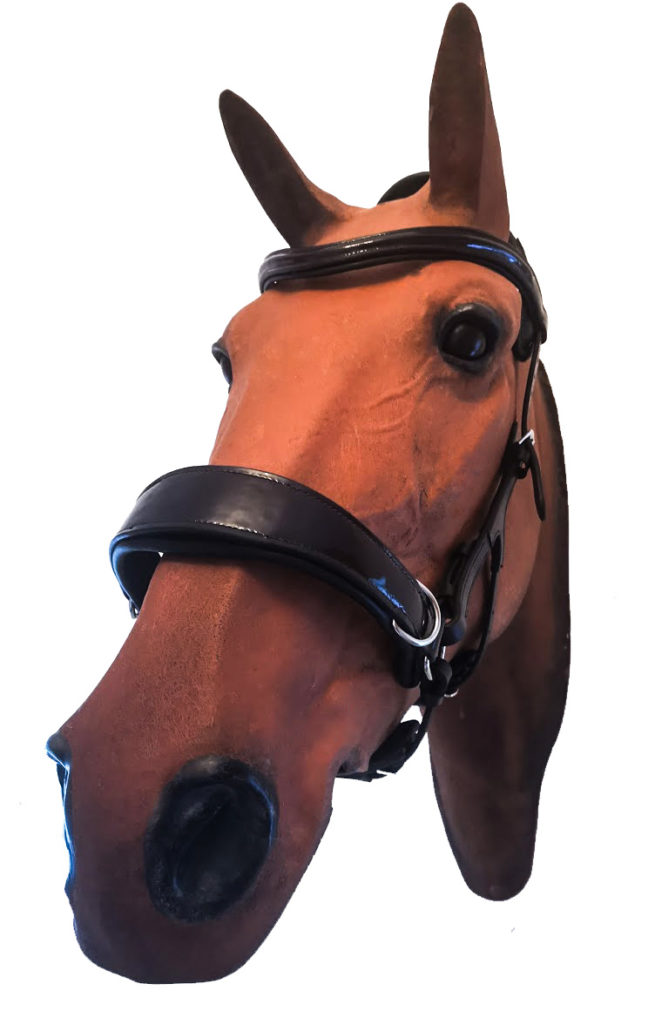The short answer is, YES! Any bridle can be harsh and bitless bridles in this respect are no different. As a bitless bridle fitter, bitless coach, and trainer I spend a lot of time explaining the reasons why bitless can offer lighter, non-aversive communication. I am often met with a response that a bitless bridle can be harsh and cause pain. This highlighted that I could share some information so any horse owner interested in bitless can avoid possible harsh and uncomfortable bridle fit and concentrate on keeping horses as comfortable as possible.
Type of Bitless Bridle
There are many designs of bitless bridles, which I explain with more depth in my Intro to Bitless course.
Mainly there are 2 types of hackamore; active and passive. The active hackamore relies on some method of tightening around the horse’s face. Passive hackamores have no leverage or squeezing action, such as sidepulls and bosals, for example, the design will not include any shanks or straps that tighten. It’s helpful to remember that essentially more contact points = more pressure, that can be dispersed on the horse’s face.
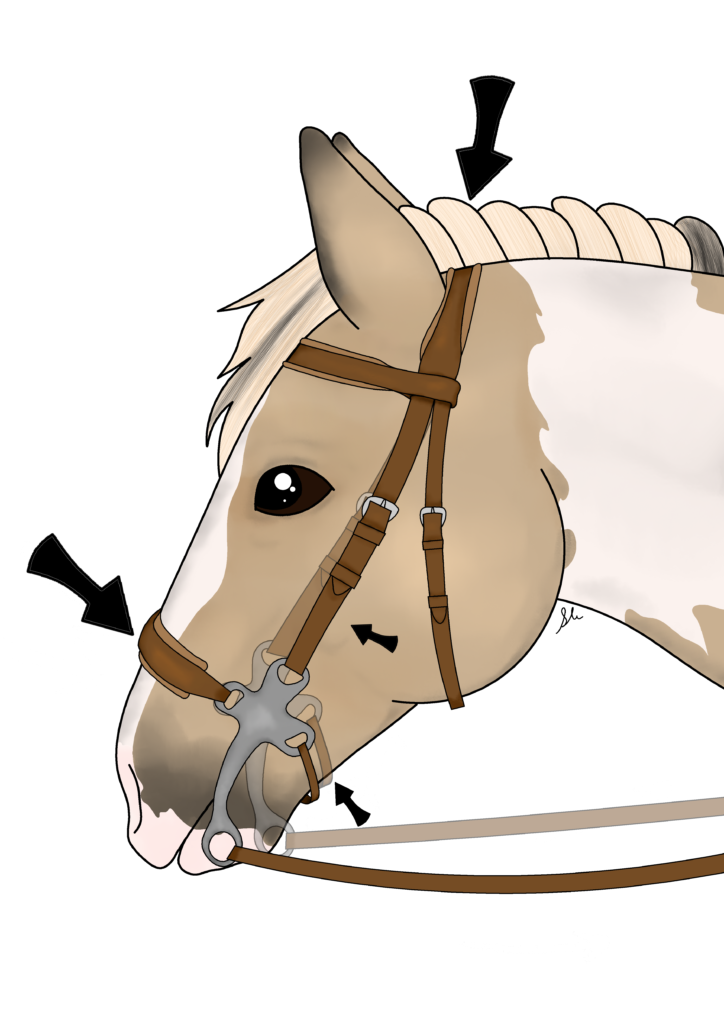
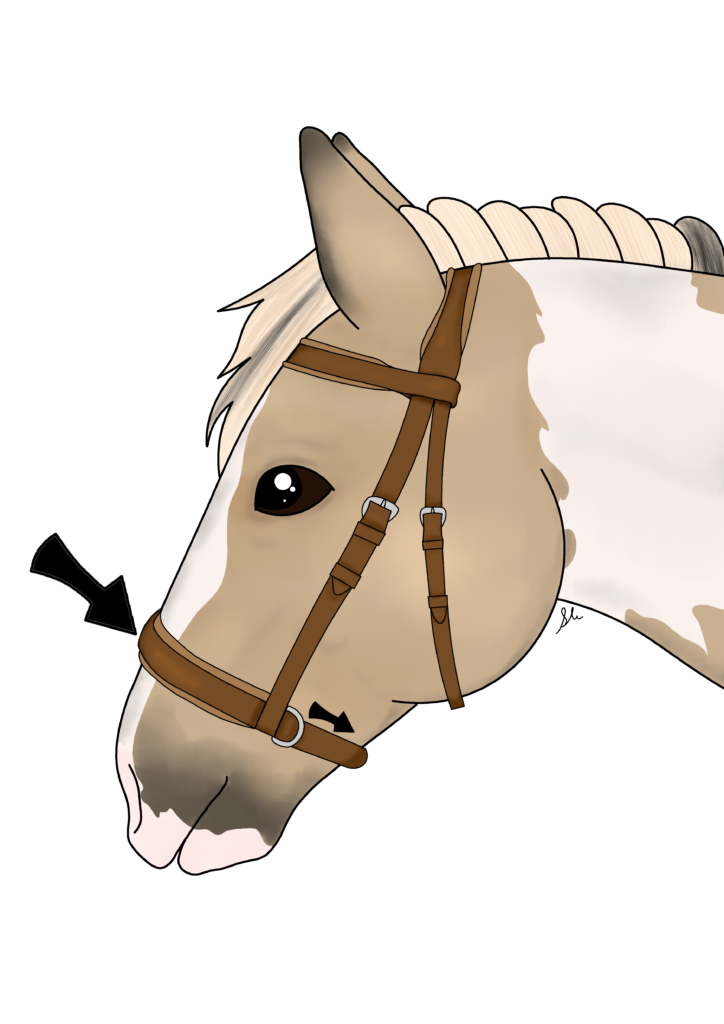
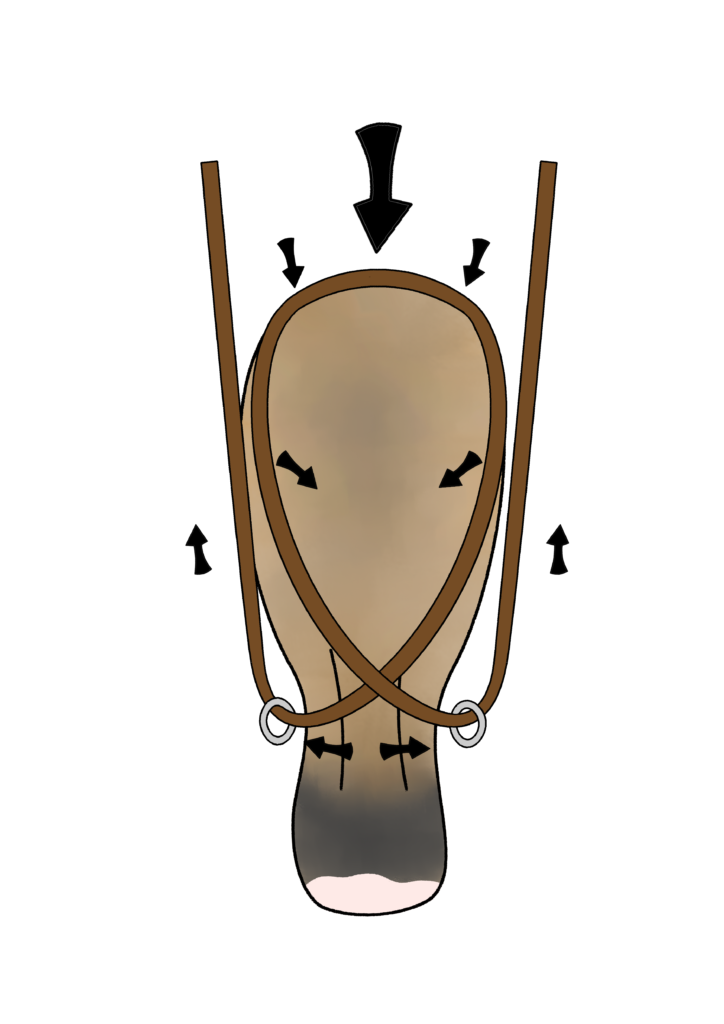
Some horses do not like the feeling of a highly active hackamore, they may well respond negatively with resistance. They may find it uncomfortable or even painful if they have a problem such as hyoid tension, previous injury, or acute pain such as toothache. So if we take, for instance, the crossunder, the most highly active type of hackamore, this could be harsh for a horse who experiences jaw pain, but for another horse who finds that pressure indifferent or even pleasurable, it could be a great experience overall. So the type of bridle and how harsh it could be is subjective to the horse.
Bridle Design
It is important to consider the materials and design of the bridle when measuring harshness. Such as bare rings or poorly placed buckles. These elements may lack comfort but are not necessarily harsh.
If the hackamore is an active shank design, the length of the shank will affect how much pressure is put on the curb and poll. Personally, I prefer short and adjustable shanks under 15cm as these have shown in my own testing to exert minimal to no pressure over the poll. Some materials will inevitably be harsher than others, such as metal, chain, rope, and rawhide. We could say that the harshness will depend on the rider’s hands, which could be true, but neither metal nor chain is never going to offer comfort. Rope and rawhide could be uncomfortable, but not to the same extent. This is why I personally consider metal chains harsh and unsuitable for any bitless bridle.
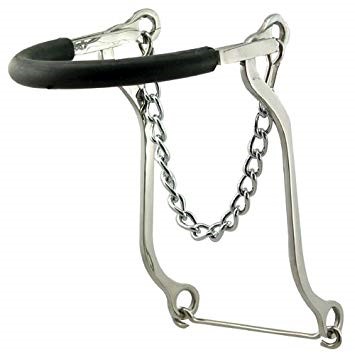

Instead, I recommend that you look for bridles that are well padded, less pressure, and of good quality. Be careful when asking for recommendations, as not everyone may consider the elements described above as harsh. When in doubt, listen to both common sense and the horse.
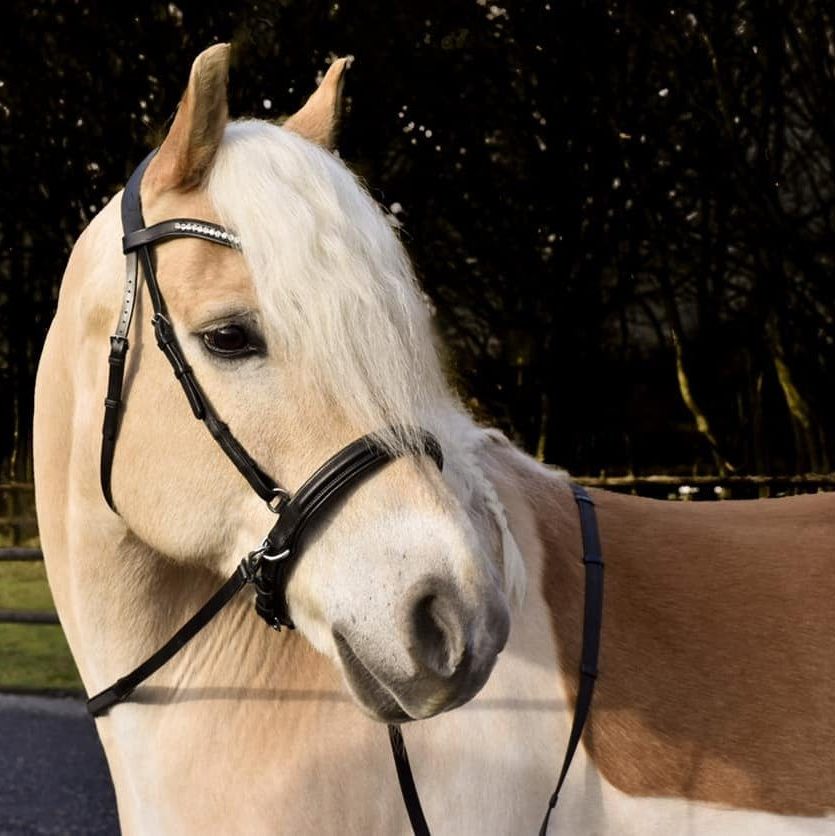
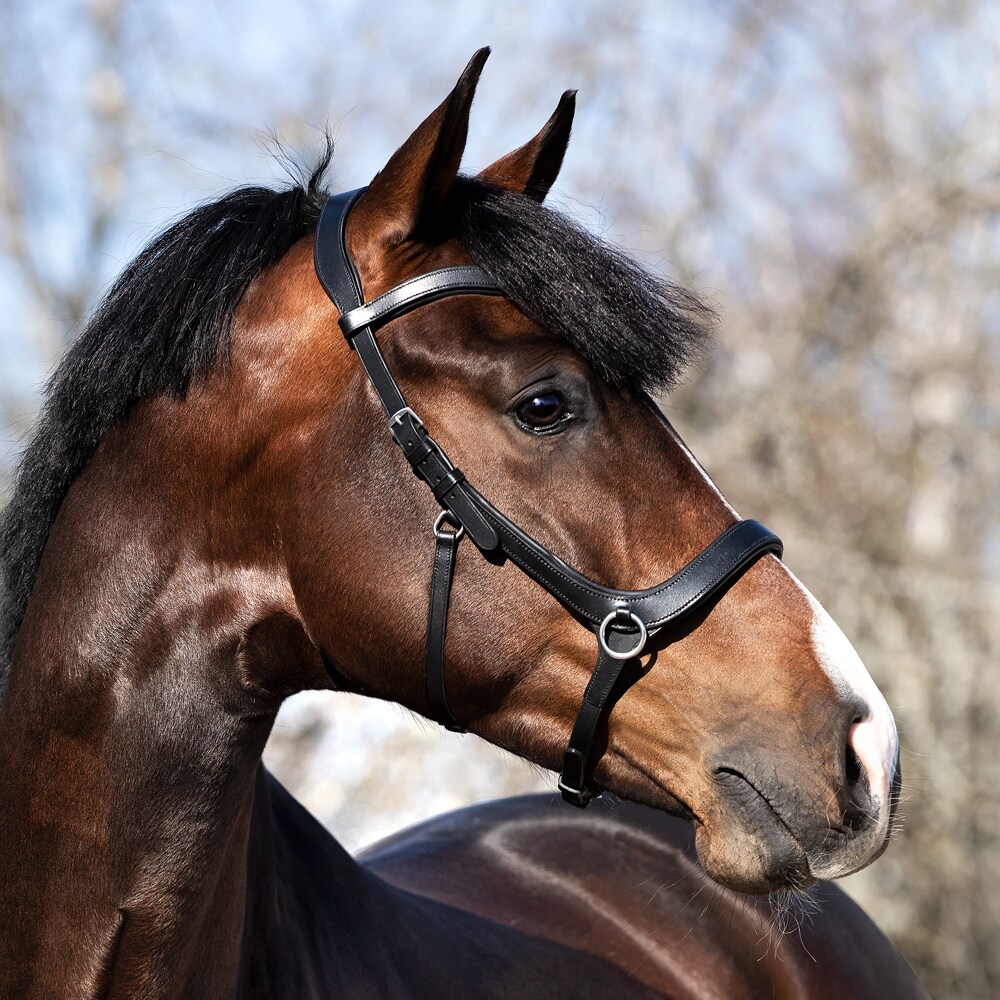
Bridle Fit
Even if you select the correct bridle for the horse and it is wonderfully padded, if fitted incorrectly it can still cause discomfort in use. The main areas to consider are the nasal bone (see below), cheekbones, and Temporal Mandibular Joint (TMJ for short). By far the nasal bone is the first and more important area of fitting as if fitted incorrectly and with enough force could in theory cause a fracture to the unsupported area of the nasal bone. This cannot be said for a correctly fitted bitless noseband.
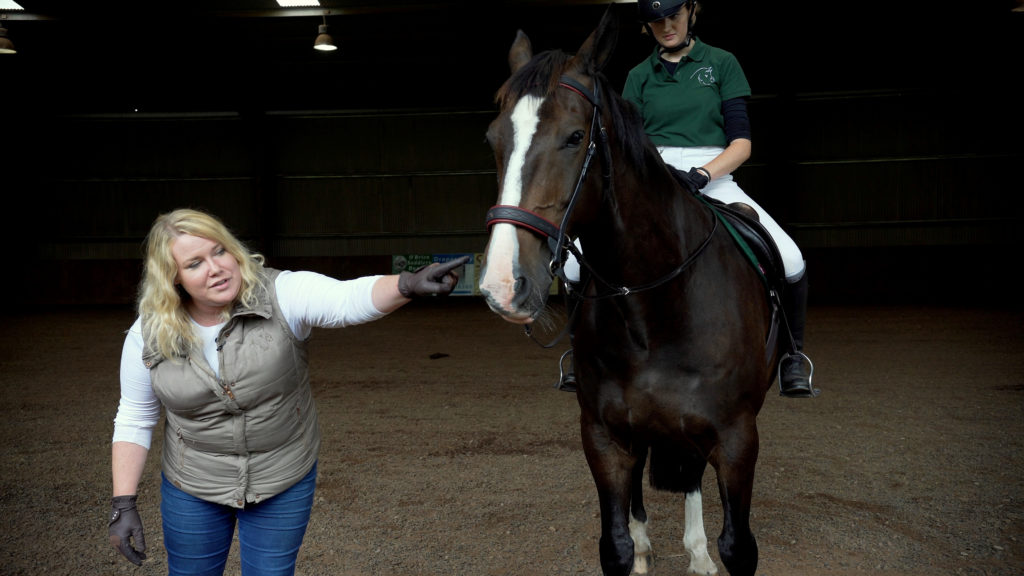
The Rider
There is no denying that the hands of the rider will determine the pressure and contact that the horse receives down the reins. Every rider should be learning to practice a balanced seat at all paces without relying on the reins. Think of the rein as a communication aid, ‘How light can you set the communication?‘ is a fantastic goal to have.

Transitioning the horse correctly to understand the cues of the bitless bridle should not be underestimated. We can do this following L.I.M.A (Least Intrusive Minimally Aversive). How we practice all training from ground to saddle and present the teaching to the horse will impact their association to work the tack and to us. Through the understanding of how horses learn coupled with knowledge of behaviour, we can truly be mindful in our approach.
If you think you are a light-handed rider, ask yourself if you can ride on the buckle or neck rein 🙂 Answer truthfully, there is always scope to improve!
What makes a kind bitless bridle?
- A bridle the horse is comfortable with
- A bridle that uses minimal pressure
- A bridle that fits correctly
- A bridle that does not cause pain
- A bride the horse understands
- A bridle used by a mindful and balanced rider
